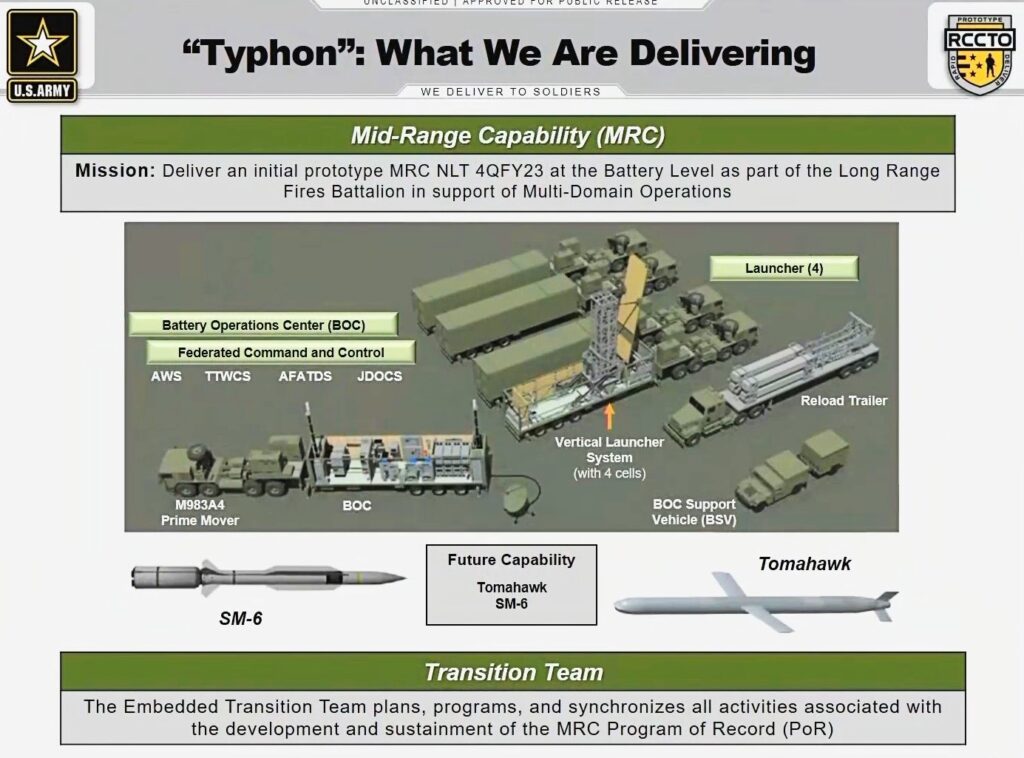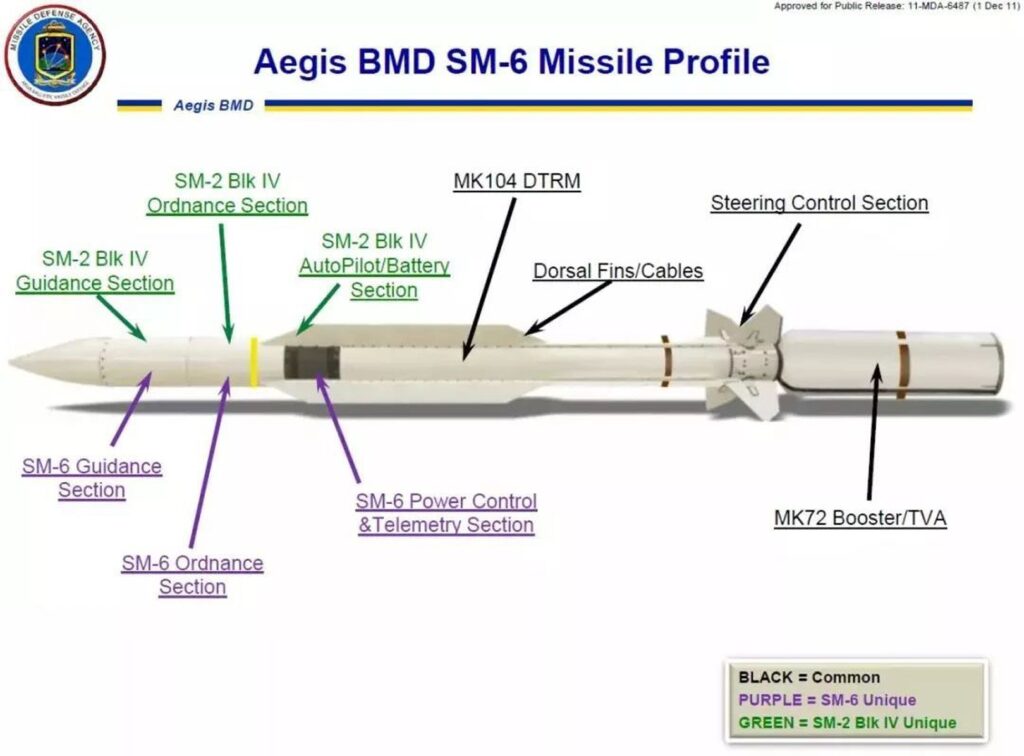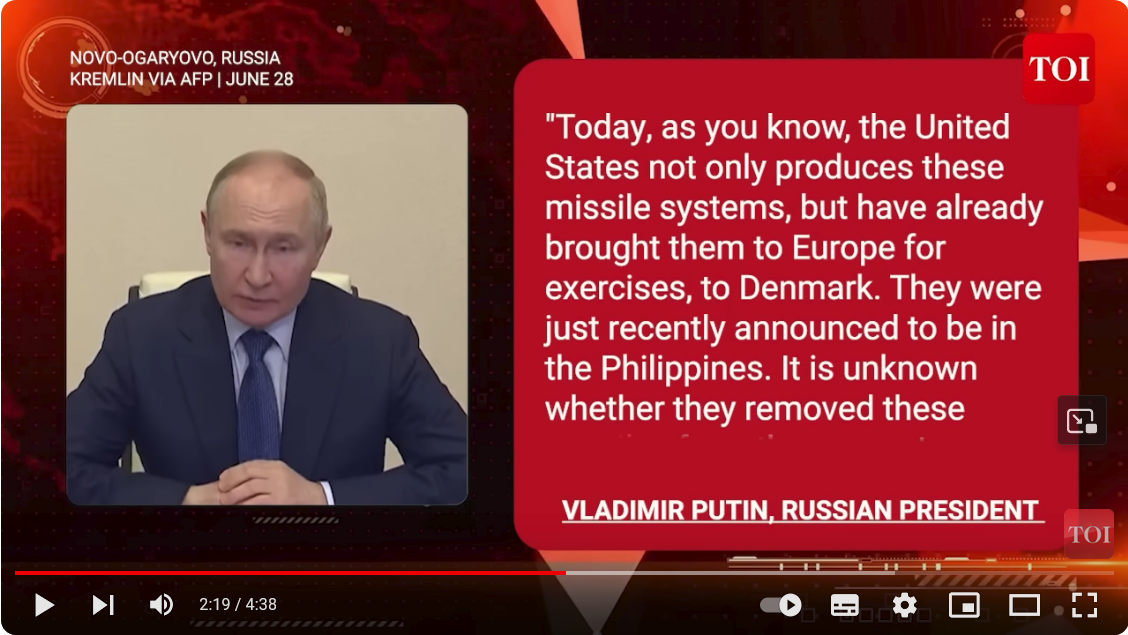Russland will die Produktion neuer Nuklear- Mittelstreckenraketen wieder aufnehmen, nachdem die USA diese schon seit Jahren wieder prodziert, und nun auch nach Europa brachte (Dänemark).
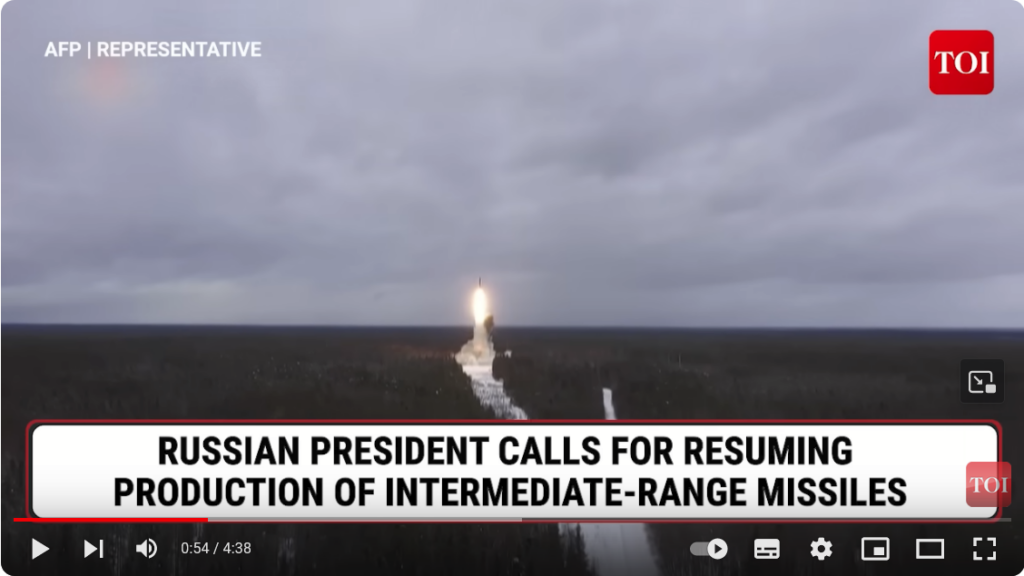
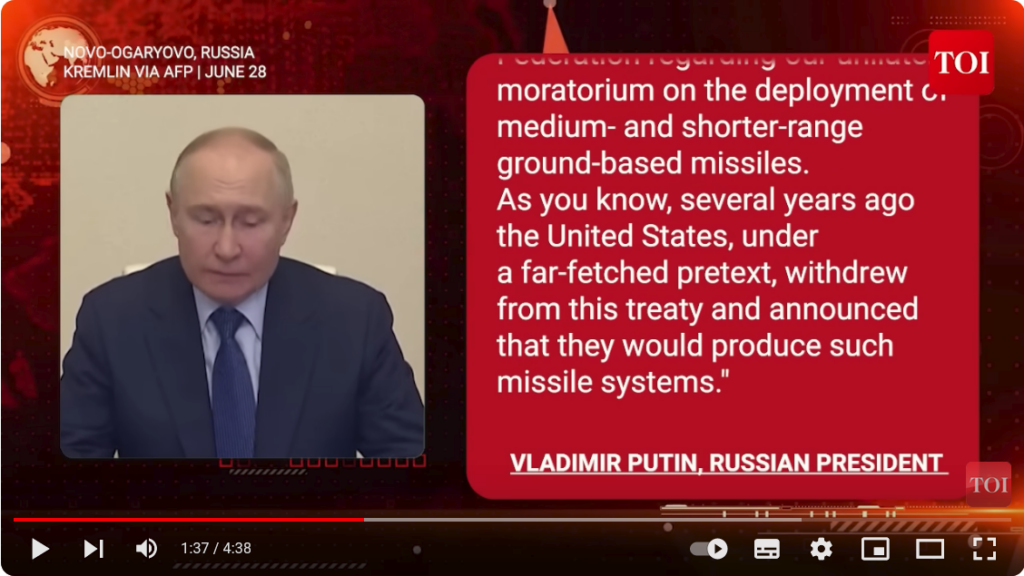

The U.S. Army has temporarily deployed its newest missile launcher to the Philippines for training purposes amid ongoing tensions over Beijing’s claims to Taiwan and the South China Sea.
https://www.stripes.com/theaters/asia_pacific/2024-04-16/army-typhoon-launcher-philippines-13562617.html
The Typhoon launcher, designed to fire SM-6 and Tomahawk missiles, was deployed last week from Joint Base Lewis-McChord, Wash., by the 1st Multi-Domain Task Force, U.S. Army Pacific said in a news release Monday. The launcher is in the islands for the Salaknib exercise, which began April 8 and wraps up Friday. Six-hundred U.S. troops are training with 1,000 of their Filipino counterparts, according to the U.S. Embassy in Manila.
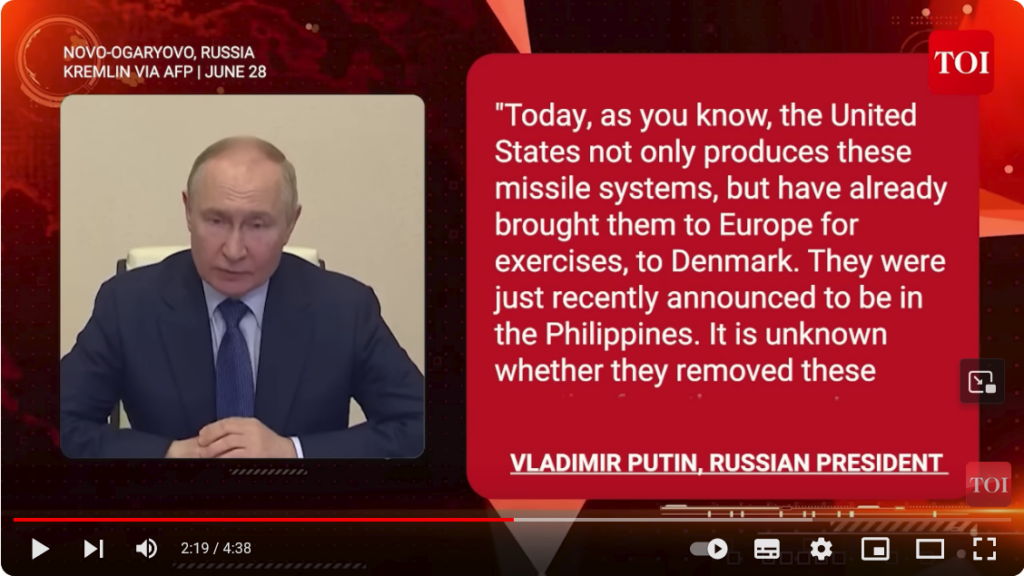
AA- Agency berichtet:
https://www.aa.com.tr/en/europe/denmark-rejects-putins-claim-about-medium-range-missiles/3261843
Danish Ministry of Defense on Saturday rejected Russian President Vladimir Putin’s claim about medium-range missiles in Denmark after Moscow threatened to resume previously banned production of intermediate range missiles, local media reported.
According to the Russian president, the alleged medium-range missiles were to be used for military exercises.
„NATO is a defensive alliance. Deterrence and defense are among NATO’s core tasks, which is necessary in light of an aggressive Russia.
„Exercises are an important part of ongoing deterrence. There are no medium-range missiles deployed in Denmark,“ the ministry wrote in a statement to Danish news agency Ritzau.
The Intermediate-Range Nuclear Forces (INF) treaty which banned the use of ground-based nuclear and conventional missiles with a range of between 500-5,500 kilometres (310 to 3,410 miles) was signed by Soviet leader Mikhail Gorbachev and US President Ronald Reagan in 1988.
However, the United States withdrew from the arms control treaty in 2019, citing Russian violations.
Putin claimed earlier on Saturday that Russia hadn’t produced such missiles since the treaty was signed.
“Today, it is known that the United States not only produces these missile systems, but has already brought them to Europe for exercises, to Denmark. Quite recently, it was announced that they are in the Philippines,” Putin said at a meeting of Russia’s National Security Council.
The Russian president threatened to start production of the strike systems and that “based on the actual situation,” Moscow will make decisions about where, “if necessary to ensure our safety,” to place them.
+++ +++
Dänemark bestreitet – und lügt dabei – denn:
The Aviationist berichtet:
https://theaviationist.com/2024/05/10/us-navy-deploys-mrc-typhon-denmark/
The MRC Typhon missile system comprises the SM-6 air defense missile tweaked for anti-shipping roles and Tomahawk subsonic cruise missiles for land targets.
The US Navy has deployed an MRC (Mid-Range Capabilities) Typhon system to the Danish island of Bornholm in the Baltic for an exercise. The sea and surface strike platform, a weapon that had triggered criticism from both Russia and China, introduced around the time of the collapse of the INF (Intermediate-Range Nuclear Forces) Treaty in February 2019, can reach ranges of over 1,500-km.
Artikel des UK Defense Journal:
https://ukdefencejournal.org.uk/nato-demonstrates-ability-to-close-baltic-sea/
NATO recently demonstrated its capability to control the Baltic Sea through a missile system deployment involving the US Navy and Danish forces on the Danish island of Bornholm.
Central to this demonstration was the deployment of the MRC Typhon missile system, which includes the SM-6 air defence missile adapted for anti-shipping roles and Tomahawk subsonic cruise missiles for land targets.
This system, capable of reaching ranges over 1,500 kilometres, signifies a significant advancement in mid-range military capabilities following the collapse of the Intermediate-Range Nuclear Forces Treaty in 2019.
This exercise marked the second deployment of the Typhon system to Bornholm, the first occurring in September 2023. The missile system was transported to Bornholm Airport on 5 May 2024, and rehearsals involving US Navy sailors and Danish military personnel followed.
Conducted under the ‘US Naval Forces Europe-Africa/US 6th Fleet, the exercise aimed to “enhance security and stability in Europe and Africa”.
The containerised missile launcher provides an advantage over traditional shipboard launchers by allowing rapid shore-based deployments.
+++ +++ +++
As a new generation of United States ground-based conventionally armed missile programmes gather pace, the question of where the US Army and Marine Corps will deploy these systems is coming into focus. These basing decisions are critical in the Indo-Pacific theatre.
Efforts by the United States to build up its ground-based long-range conventional strike capability are starting to materialise, setting the stage for further competition with China in the Indo-Pacific.
The US underscored its appetite for these systems with the release in March of the fiscal year 2025 defence budget request. The US Army is asking Congress to fund 230 Precision Strike Missiles (PrSMs), a more than 20% jump from earlier plans. The service also seeks funding for 32 ground-launched Tomahawk cruise missiles as part of its Strategic Mid-Range Fires (or Typhon) programme, while the Marine Corps is requesting eight launchers under the Long-Range Fires programme and 22 Tomahawk cruise missiles. US Indo-Pacific Command’s unfunded priorities list includes various ground-based missile systems.
Prime time for missiles
The push to field ground-launched strike systems with ranges exceeding 500 kilometres dates to 2019, when Washington exited the Intermediate-Range Nuclear Forces (INF) Treaty. The US withdrew due to its assessment that Moscow had been in breach of the treaty for several years, pointing to the 9M729 (RS-SSC-8 Screwdriver) ground-launched land-attack cruise missile, with a range more than triple the treaty’s lower limit of 500 km, as the system of concern.
+++ +++
The U.S. Army plans to deploy a new medium-range missile launcher in the Asia-Pacific region by the end of this year that could act as a deterrent against China, it has been learned.
“I’m not going to discuss what system and I’m not going to say where and when,” Gen. Charles Flynn, U.S. Army Pacific commanding general, told The Asahi Shimbun and other media organizations at the U.S. Embassy in Tokyo on April 3. “I’m just saying that there will be a long-range precision fire capability that will come to the region.”
If the U.S. Army deploys a surface-launched medium-range missile, it would be the first since Washington and Moscow concluded the Intermediate Range Nuclear Forces (INF) Treaty in 1987.
While Flynn did not disclose the name of the missile launching system, it is believed to be the ground-based Typhon system being developed by the U.S. Army.
Typhon is capable of launching the Tomahawk cruise missile with a range of more than 1,600 kilometers and the new SM-6 interceptor missile.
